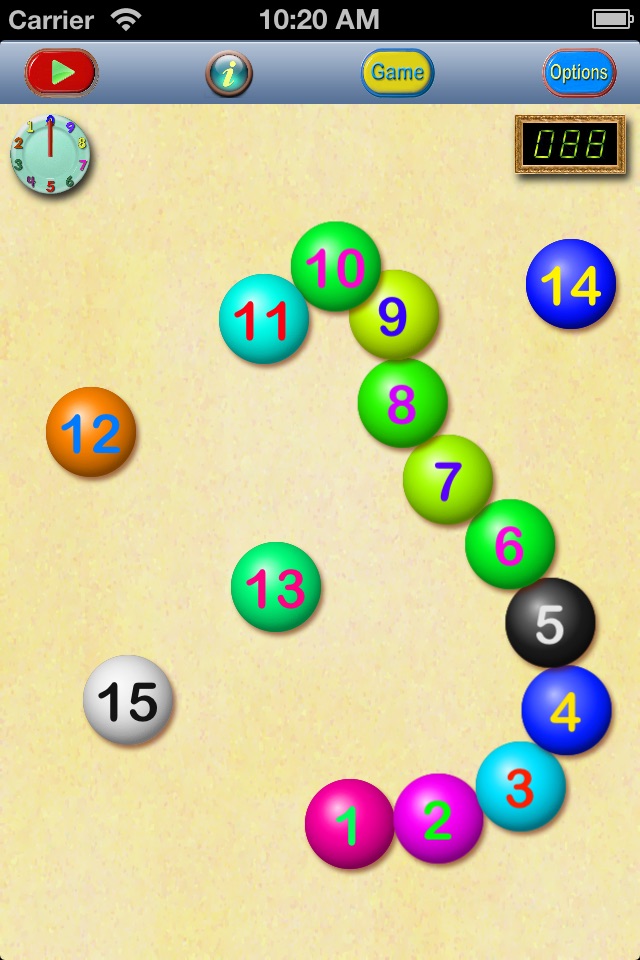
Counting Beads app for iPhone and iPad
Developer: Wayne Allen Bateman
First release : 14 Jun 2011
App size: 0 Bytes
This is a counting and alphabetic learning game for children.
Learn to count by connecting the beads in numeric order to form a chain. Begin by dragging bead number 1 until it touches bead 2. The beads will stick together and bead 1 will trail behind as you drag bead 2 to bead 3. Continue connecting the chain to each next higher bead until the chain is complete. As you drag the chain by its leading highest-numbered bead, the rest of the beads will trail behind.
You can move the chain by dragging the leading bead directly with your finger, or with the “Options” menu, changing to “Attract” or “Tilt” mode. In “Attract” mode, touch the screen anywhere with your finger and the leading bead will move toward the position of your finger. In “Tilt” mode, hold the device face up parallel to the floor and tilt it slightly from level to let gravity roll the leading bead downhill in the direction of the tilt.
With the “Options” menu, you may also select the number of beads in the game, or alternately number them with letters of the alphabet. You can also play the game with a timer and scorekeeper to see how quickly you can complete the chain and improve your performance.
The application also contains three alternate exercises to the principal Counting Beads selection. The amusing “Tail Chase” game begins with 2 bead chains of equal length -- one belonging to the player and one to the opponent. The object of the game is drag the player chain so that the leading (number 1) bead touches the tail (highest number) bead of the opponent chain. This will catch the tail bead so that it detaches from the opponent and becomes the new tail of the player chain. Continue to chase and steal opponent beads until all have been captured and the opponent chain is empty. During all this time, the opponent chain will also be similarly chasing to capture beads from the player chain.
The “Switcheroo Circle” and “Switcheroo Square” games are elementary counting exercises that let the player arrange the beads in a circle or square until they are sorted in numeric order. Sorting and arranging is accomplished by switching the places of adjacent beads.



